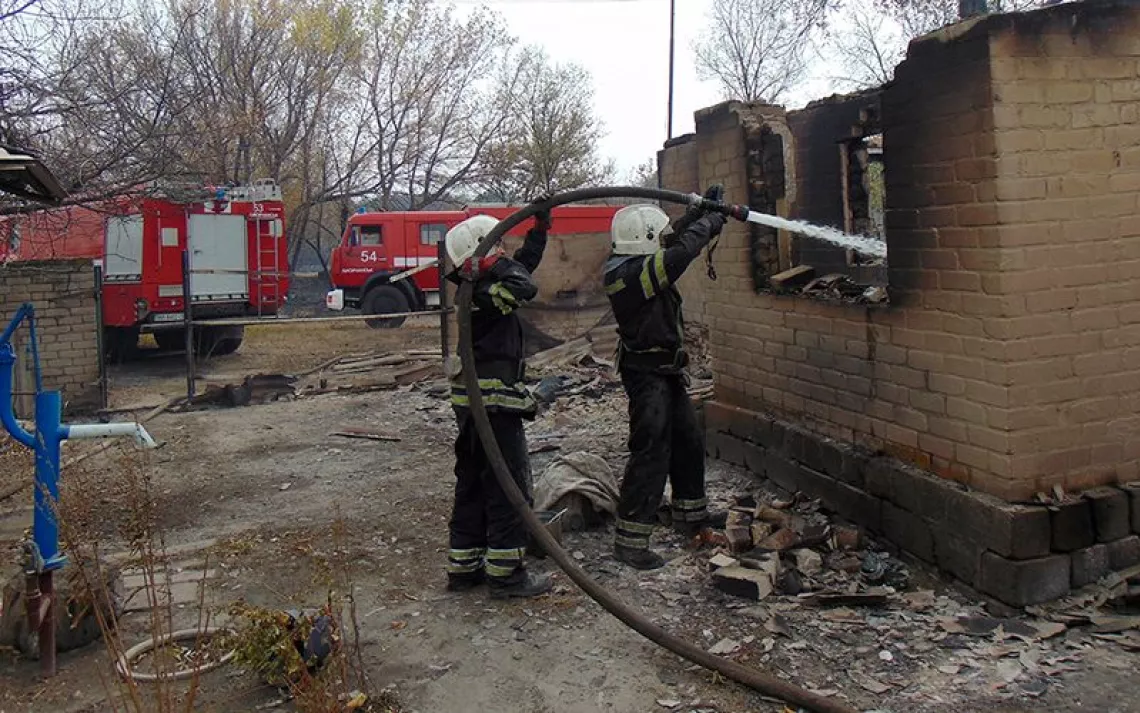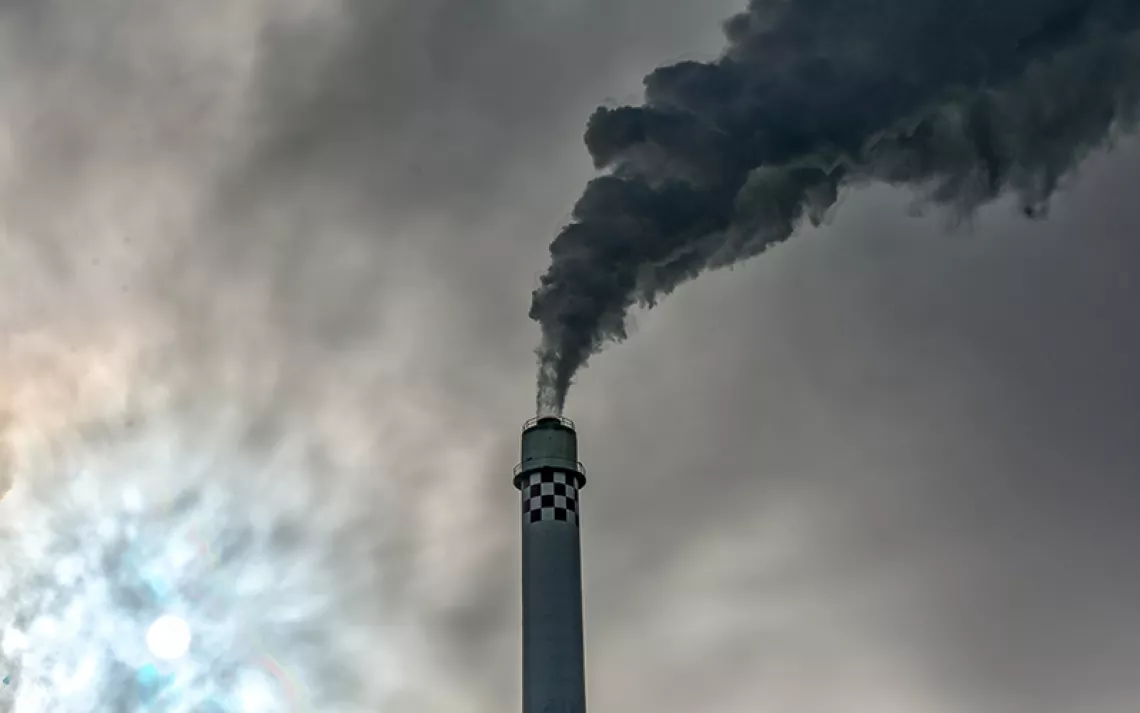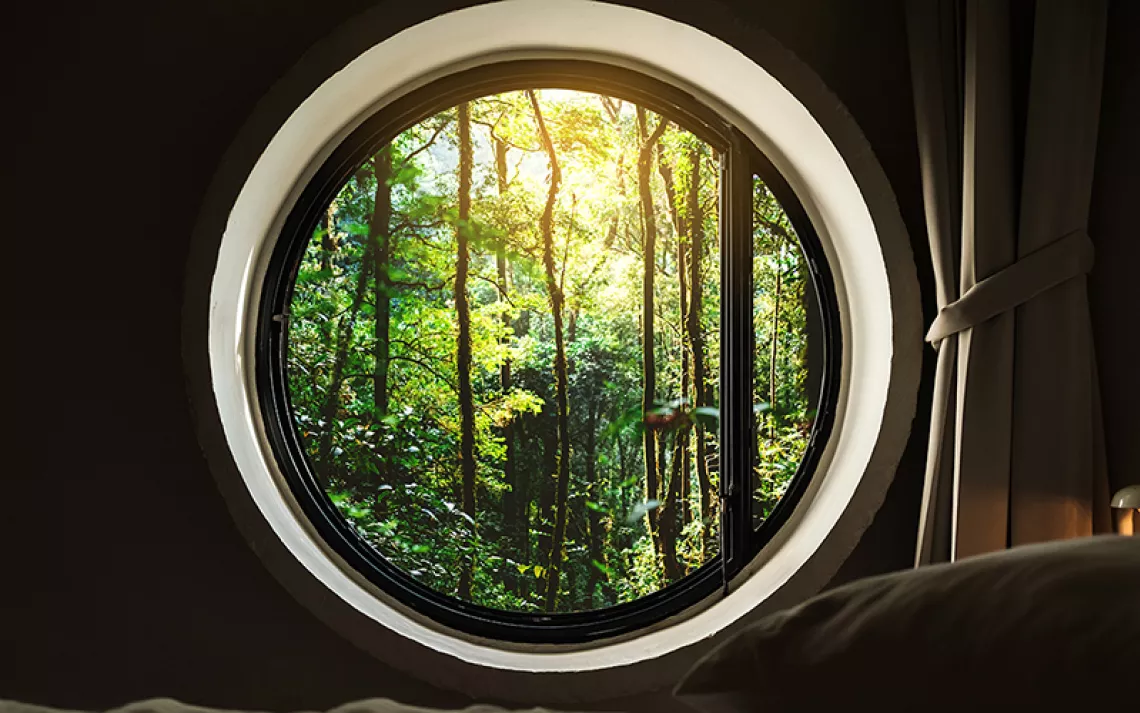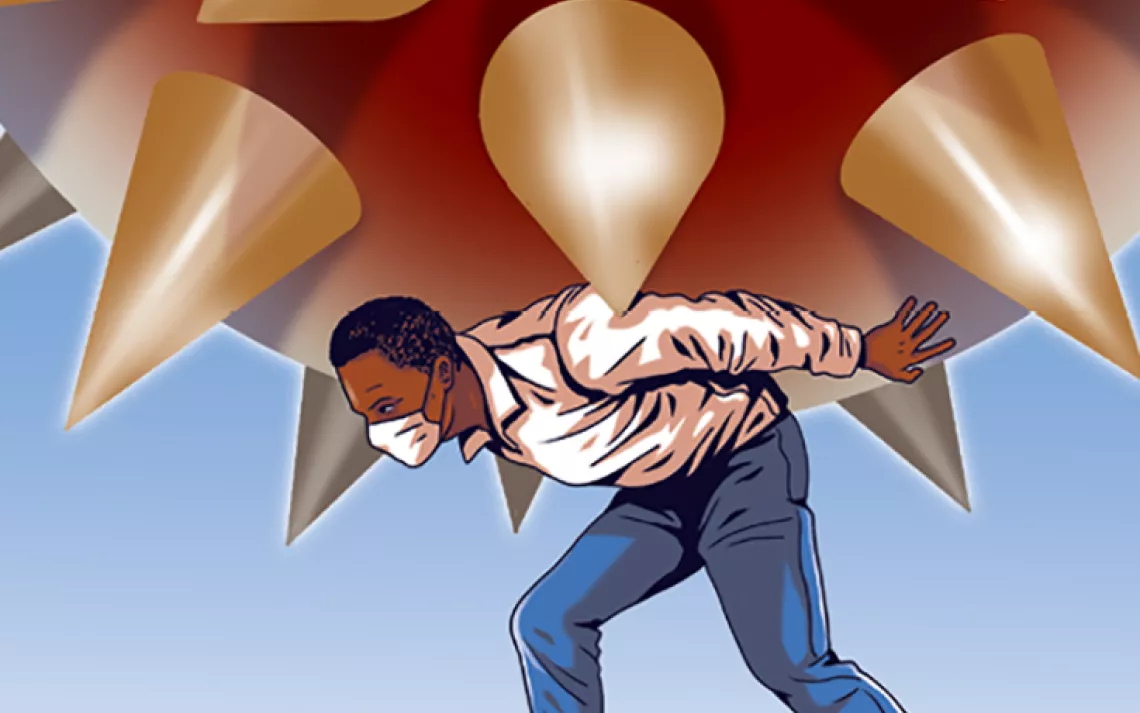Cancer Alley Now Coronavirus Alley
The pollution-induced illnesses these Louisianans have suffered for decades put them at greater risk from COVID-19

Holy Rosary Cemetery in Taft, Louisiana, is adjacent to the Dow Chemical Corporation. Industrial plants are not permitted to build on top of gravesites. | Photo by Edwin Tse
The air along the Mississippi River in southeast Louisiana doesn’t smell right. It stinks of an industry that prioritizes cheap plastic over human health.
The residents of this 85-mile stretch, known since the 1980s as Cancer Alley, are predominantly black, and according to the EPA’s 2014 National Air Toxics Assessment, their risk of getting cancer from air pollution is 95 percent higher than most Americans’.
Today, they’re also disproportionately dying from the novel coronavirus. At one point in April, St. John the Baptist Parish had the nation’s highest per capita COVID-19 death rate. Despite the fact that African Americans account for only a third of the Louisiana population, they account for 55 percent of COVID-19 deaths.
Roughly 150 petrochemical plants line the bank of the Mississippi between Baton Rouge and New Orleans. Relying on intentionally loose zoning, cheap land, and convenient access to a major shipping corridor, the plants turn fossil fuels into various plastic products. Louisiana’s air pollution standards are the loosest that the EPA allows, and a ProPublica investigation found that the state generally “takes companies at their word on emissions.”

The Shell petrochemical plant in Norco, Louisiana, captured from the top of a Mississippi River levee. | Photo by Edwin Tse
Residents are treated as collateral damage. The industrial plants collectively release more than 30,000 tons of annual emissions of PM 2.5, a class of particulate matter 1/30th the size of a human hair that can lodge deep in the lungs and the bloodstream and serve as a carrier for other chemicals. This leads to respiratory illnesses including chronic cough, bronchitis, chest illnesses, and pneumonia—all preexisting conditions that make COVID-19 more deadly.
Until recently, the poor health of these communities was mostly anecdotal. Vickie Boothe is an epidemiologist and environmental engineer who spent 14 years at the EPA and then 19 years at the Centers for Disease Control and Prevention studying environmental and community health. Now retired, she works with the Coalition Against Death Alley. “When COVID-19 hit, my background became really useful,” she says. Between August 2019 and June 2020, she conducted an extensive literature review that revealed—despite the fact that Cancer Alley had been named four decades ago—that there had never been a single epidemiological study of exposures and health outcomes, not even a comprehensive community health assessment.
Michael Esealuka is an organizer with Healthy Gulf, part of the Coalition Against Death Alley. “Sometimes science actually falls behind the people,” she says, “and experts need scientific documentation to prove what people who are living next to these plants are telling them and have been saying for decades.”
The dearth of evidence isn’t accidental. In 2010, when a Tulane law clinic sued the Louisiana Chemical Association for violating air pollution laws, the LCA threatened to never hire another Tulane graduate, urged the public to withhold donations from the university, and even lobbied the state government to immunize it against such suits. Boothe says it was a “warning to every other academic organization” to stay away from the issue.
The result was that local and state officials could claim that there was insufficient information linking industrial pollution to negative health outcomes. Chuck Carr Brown, secretary of the Louisiana Department of Environmental Quality, went so far as to call concerned residents “fear mongers” in 2016. Kimberly Terrell, director of community outreach at the Tulane Environmental Law Clinic, likens the situation to drinking and driving. “If you get pulled over and you’re drunk, the fact that you have not harmed anybody is irrelevant,” she says. “Just the fact that you put people at risk is a problem.”
Decision-makers might not be able to look away much longer. A nationwide study released by Harvard researchers in April 2020 found that a small increase in exposure to PM 2.5 leads to a significant increase in the COVID-19 death rate. Terrell and her colleagues subsequently built off this work by analyzing the impact of industrial PM 2.5 emissions on COVID-19 deaths in Cancer Alley. The results were clear: Parishes with high pollution burdens and high percentages of black residents also experienced the highest per capita COVID-19 death rates.
Terrell’s study, which is being submitted for peer review, was inspired by residents’ hunger for information. “Everybody in St. John and St. James knows somebody who’s had coronavirus,” Esealuka says. Darryl Malek-Wiley, who works for the Sierra Club’s Environmental Justice and Community Partnerships Program and has been organizing in Cancer Alley since 1983, says that there’s a lot of fear among residents right now: “We’ve had this rush of deaths.” One prominent member of the Coalition Against Death Alley, Rev. William Barnwell, died in March of suspected coronavirus. In lieu of a New Orleans–style funeral, Malek-Wiley says, 75 to 80 cars participated in a drive-by memorial.
Despite the virus, new polluters have their eyes on St. James Parish. The most high-profile is Formosa, a Taiwanese company with a track record of environmental negligence.
A revised land-use plan that was quietly passed in 2014 paved the way for more industrial development, and Formosa is planning a 14-plant complex that would double the amount of air pollution in the parish. “We are not going to be able to breathe the air, and we’re going to die one at a time,” said Sharon Lavigne, the founder of Rise St. James, in a video.
The proposed site of the Formosa complex is atop a slave burial ground. “The ancestors lived on that land, they worked on that land, and they died on that land,” Lavigne says. “And these people want to put a pipeline through one of the gravesites. The ancestors need to come out of their graves and get ’em.”

Sign up to receive Sierra News & Views
Get articles like this one sent directly to your inbox weekly.
With this action you affirm you want to receive Sierra Club communications and may vote on policy designated by the Sierra Club Board.
Just months after Lavigne and other RISE St. James members staged a protest at the site, the Louisiana state legislature amended a trespassing law to establish sentences of up to 15 years for trespassing on "critical infrastructure," which would include oil and gas complexes. The law, which opponents said was an attempt to silence activists, was vetoed by governor John Bel Edwards in June. Legislators still have the power to override the veto.

Myrtle Felton, Sharon Lavigne, Gail LeBoeuf, and Rita Cooper of Rise St. James protest the Formosa petrochemical plant, which is planned to be built atop multiple slave cemeteries. Formosa claims to be able to build on the site since Rise St. James members cannot prove that they are descended from those buried. | Photo by Gerald Herbert/AP
Today, Rise St. James, which is also part of the Coalition Against Death Alley, has shifted its advocacy to reflect the compounding crises of petrochemical buildout and the pandemic. This spring, organizers passed out 400 Easter bags with information about air pollution and COVID-19. They’ve also given out masks at the local Walmart, and on Mother’s Day they distributed 520 free lunches along with yard signs that read, “No Formosa; St. James Is Our Home.” They held a webinar in May to raise awareness and get more folks involved. The group’s leaders are as energized as ever and optimistic about the power of community organizing to hold local councilmembers and industry accountable.
Recent successes indicate reason for optimism. Last year, activists and allies successfully stopped the construction of the Wanhua petrochemical plant. Nearby St. Gabriel Parish has wielded its zoning laws to keep petrochemical plants out. And in April, Representative Cedric Richmond responded to a letter from the Coalition Against Death Alley by acknowledging how the coronavirus is disproportionately impacting black communities. He called on Congress to create a select committee to “explore real solutions to the inequalities in our communities—including the full range of underlying disparities in social, economic, and environmental factors that affect health, including pollution.”
Those solutions will need to address the lack of jobs in these parishes, and the fact that, after a period of relative air quality improvement, PM 2.5 pollution is on the rise. “If anything, these disparities are on track to get worse,” Terrell says, despite the fact that improving air quality is completely achievable. “We’ve done it; we know how to do it,” she says. “There just has to be the political will to do it.”
Right now, justice seems a long way off. Esealuka says organizing against the petrochemical buildout can be exhausting because big corporations can, quite literally, wait for activists to die. That risk is compounded by COVID-19 and the state’s reopening in May, before some Cancer Alley residents even had masks.
But getting deliberately left behind to suffer illness and indignity is nothing new to the residents of Cancer Alley, who have known that reality for decades. Lavigne says there’s no time to waste. “I don’t want a five-year plan,” she says. “I want a plan for now.”
 The Magazine of The Sierra Club
The Magazine of The Sierra Club



